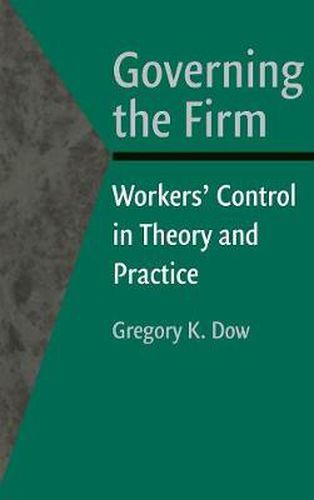Readings Newsletter
Become a Readings Member to make your shopping experience even easier.
Sign in or sign up for free!
You’re not far away from qualifying for FREE standard shipping within Australia
You’ve qualified for FREE standard shipping within Australia
The cart is loading…






Most large firms are controlled by shareholders, who choose the board of directors and can replace the firm’s management. In rare instances, however, control over the firm rests with the workforce. Many explanations for the rarity of workers’ control have been offered, but there have been few attempts to assess these hypotheses in a systematic way. This book draws upon economic theory, statistical evidence, and case studies to frame an explanation. The fundamental idea is that labor is inalienable, while capital can be freely transferred from one person to another. This implies that worker-controlled firms typically face financing problems, encounter collective choice dilemmas, and have difficulty creating markets for control positions within the firm. Together these factors can account for much of what is known about the incidence, behavior, and design of worker-controlled firms. A policy proposal to encourage employee buyouts is developed in the concluding chapter.
$9.00 standard shipping within Australia
FREE standard shipping within Australia for orders over $100.00
Express & International shipping calculated at checkout
Most large firms are controlled by shareholders, who choose the board of directors and can replace the firm’s management. In rare instances, however, control over the firm rests with the workforce. Many explanations for the rarity of workers’ control have been offered, but there have been few attempts to assess these hypotheses in a systematic way. This book draws upon economic theory, statistical evidence, and case studies to frame an explanation. The fundamental idea is that labor is inalienable, while capital can be freely transferred from one person to another. This implies that worker-controlled firms typically face financing problems, encounter collective choice dilemmas, and have difficulty creating markets for control positions within the firm. Together these factors can account for much of what is known about the incidence, behavior, and design of worker-controlled firms. A policy proposal to encourage employee buyouts is developed in the concluding chapter.